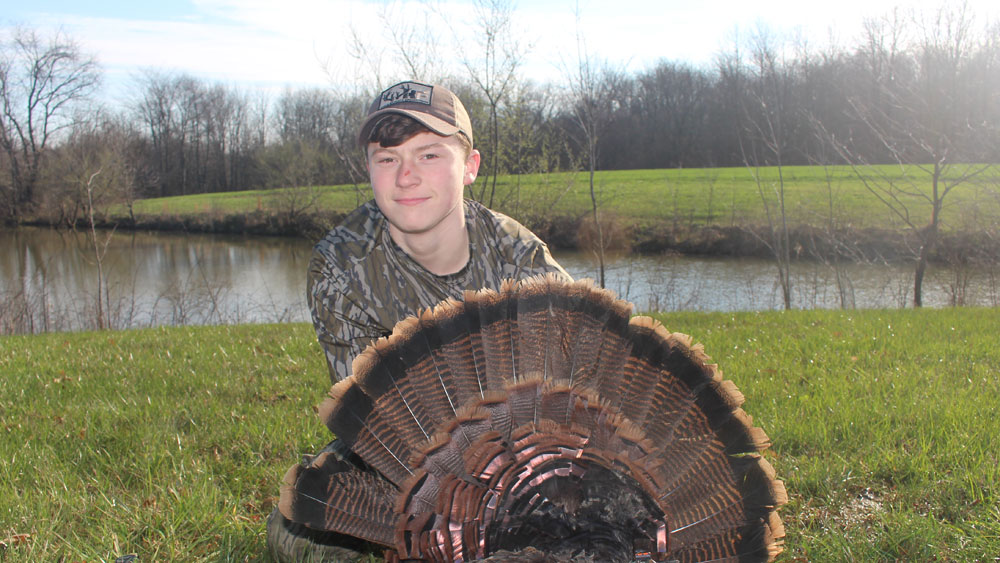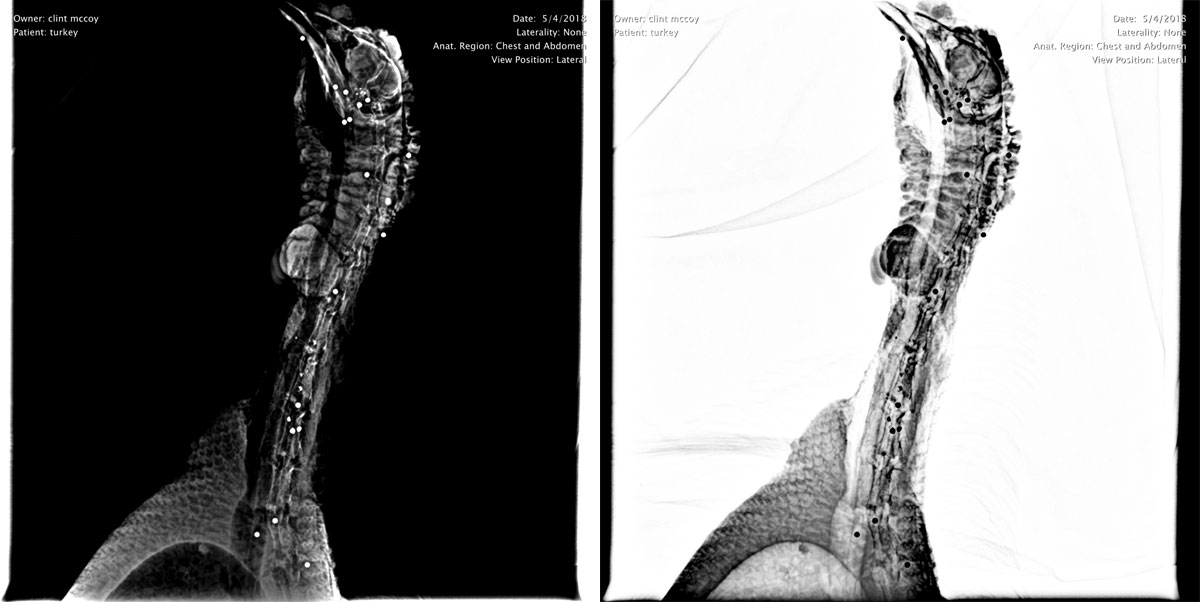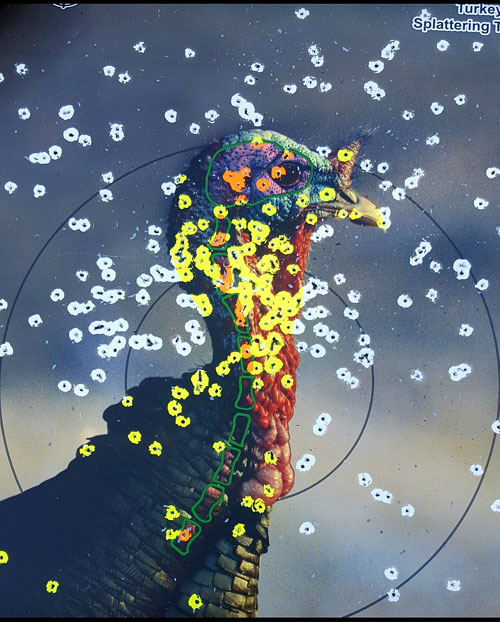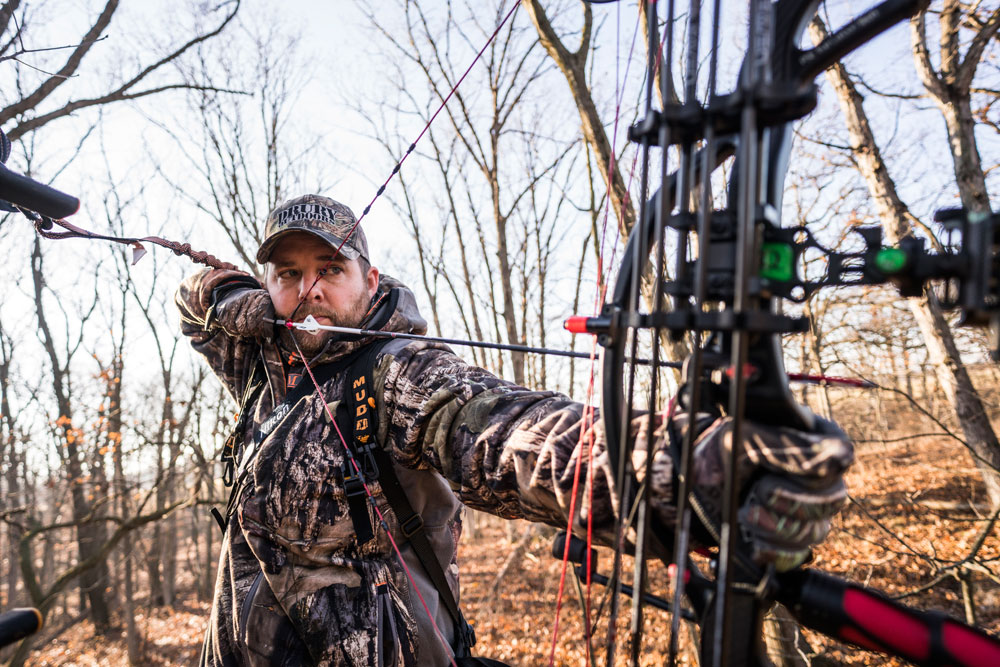Kat Ainsworth
Years ago, when I first began turkey hunting – nevermind how many years ago – 20 yards was often the crystalline edge of shotgun patterning. Much beyond it and your pattern went from Tight Cluster of Doom to a story about the studly longbeard that got away. Today, ballistics have advanced significantly; your average turkey load in a standard shotgun is reliable at 35 yards but the right combination of ammo, shotgun, choke, and red dot extend your reach to 50 yards and beyond. Finding that sweet spot is up to you, the hunter.
In the past, I’ve resorted to the usual methods to prove a ballistic point with shotguns: charts, paper, calipers, ballistic gel, and a personal penchant for perforating apples and potatoes. Now, thanks to a friend of mine, I’m upping my game with x-rays.

Clint McCoy is a small-animal veterinarian and hard-core hunter who shares my obsession with ballistics. We don’t just enjoy punching holes in paper with various loads and reading the charts produced by manufacturers, we want to see and do it all ourselves. We also share a profession – well, we did – but now Clint’s still practicing full-time whereas I’ve gone on to the illustrious life of a full-time outdoor writer. One factor of vet med is a love – okay, obsession – with animal anatomy which also plays a vital role in successful hunting. So it wasn’t surprising when Clint sent me a ballistics-related message during spring turkey season this year. It did, however, surprise my dog Puck who had the ill fortune to be standing next to me when I opened it and expressed by excitement rather loudly. There before my ballistics-obsessed eyes was an impeccably-exposed x-ray not of a fascinating fracture or bizarre foreign body but of a turkey.
That was it. I’d died and gone to ballistics heaven. You prove your choke and turkey load work by pulling out pictures of birds you’ve killed? I see your grip-and-grin photo and raise you x-rays showing pellet placement.
The Gear
The turkey shown in Clint’s x-rays was taken from a distance of 35 yards; the impact was so intense the bird somersaulted snood-over-fan before hitting the ground. Shotgun of choice was his Remington 870 SPS /our-obsession/blogs/how-to/how-to-pattern-a-shotgun-for-turkey-hunting, a 12-gauge shotgun with a 20” barrel, empty weight of 7.13 pounds, and Mossy Oak Obsession finish. Clint, his wife, and his son have taken 25 turkeys – and counting – over a four-year period with this 870, so you could say it’s earned its place as a favorite. Clint outfitted it with a Carlson’s Long Beard XR Extended Ported Choke Tube with a .660” constriction, a choke chosen after quite a bit of time spent patterning shotguns from the bench. Load of choice was and always is Winchester Longbeard XR 3.5” 2 1/8 ounce #5 shot. For the piéce de résistance, there is also a Weaver Kaspa 1-4x 24mm VTZ – Vertical Turkey Zone – scope sporting a Mossy Oak Obsession finish mounted to the 870. Clint says he uses the Weaver scope instead of a red dot because there are “no batteries to mess with.” Any of us who have watched a dot dim and die mid-hunt understand the fickle nature of battery life.
The Wound Cavities

Rather than put together my own account of things I opted to drag Clint into this one. He explains why placement and wound cavities are more important than tends to be realized:
“Understanding target anatomy allows us to define the type of trauma needed to create a humane and ethical kill on the game we are hunting. The type of tissue we are targeting in the neck of a gobbler is different than the type of tissue we target in the thorax of a deer. We’re targeting the gobbler’s central nervous system. The brain and spinal cord are both surrounded by bone, muscle, connective tissue, and fat. Sending a payload of shot that carries sufficient energy into this tissue to cause [immediately] catastrophic CNS failure should be every turkey hunter’s goal. Energy transfer from shot to tissue is the name of the game.
Spending time bench-shooting 12-gauge turkey loads is pure misery, but it’s necessary. Spending the money on various loads and changes [then] having a few range sessions is a great way to understand what your gun [can do]. I usually start at 20 yards and back out in 10-yard increments until my pattern is too open to sufficiently achieve proper energy transfer. My Remington 870 SPS with a Carlson’s choke in .660 constriction can throw killing patterns of Winchester Longbeard #5 shot out to 60 yards but seems to have a sweet spot between 35 and 40 yards. Hit a gobbler with that payload in that sweet spot distance and it’s total system shutdown.”
Ballistics Bottom Line
“One shot, one kill” is seen as an annoying cliché by some hunters but as with so many clichés and stereotypes it exists because it’s based in reality. Clint and I have both been asked on many occasions how we can go from healing to hunting and the answer is simple: they’re connected. As Clint explained, an intricate understanding of anatomy translates to knowing where to shoot for an ethical kill. It goes beyond glancing at a drawing of the heart and lungs on the internet but that’s a tale for another day. We eat what we kill. Know your gear and your own abilities and have the sense to work within them.
Clint does what all hunters should do: he spends inordinate amounts of time shooting from the bench to ensure he knows how his gear will perform during a hunt. All too often I overhear guys remark how they don’t need to shoot their gun before whatever season it is because they’re either “just that good” or “it was zeroed last winter, I’m sure it’s fine”. Then there are the guys who think a new shotgun out of the box paired with whatever turkey load was on sale will get the job done. I could easily go on, but you get the idea.

As hunters we are duty-bound to deliver clean, ethical shots and that’s not likely to happen when little-to-no care or attention is paid prior to a hunt. You need to practice and you must know your gear. All you need aside from your gun and ammo are some targets – I highly recommend Birchwood Casey’s PREGAME reactive targets which come printed with everything from turkeys to hogs to deer – and time. You can also download a free turkey head target here. Hit the range, then hit the turkey woods. It pays off in meat.






























